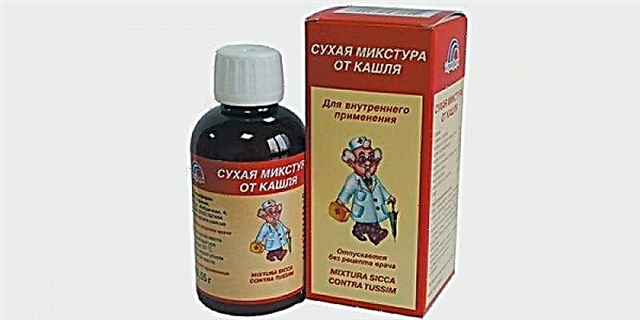How does mom react when a baby develops a rash? Of course, she is frightened, a rash that looks like small bruises is especially terrible, and if at the same time the baby cries from pain and complains about the tummy, this makes you panic. So what to think about, what to do, what is the forecast? Since both abdominal pain and various rashes are not uncommon in childhood, it is easy to make mistakes not only for mothers, but also for the doctor.
In medicine, as in life: the more difficult, the more interesting. Autoimmune processes are always extremely complex, and in diagnosis, and during, and in treatment.
It should be noted that there are many varieties of vasculitis, but they are not so common.
We will not discuss all the variety of systemic vasculitis, we will only talk about Shenlein-Henoch disease, which occurs most often and has all the typical signs of vasculitis.
What is vasculitis and how does it develop?
Hemorrhagic vasculitis is a disease that develops more often in children, in most cases in boys. But babies and adults are also not immune from it.
The disease is based on the formation of immune complexes and the activation of the compliment system proteins, which have a damaging effect on the vascular wall. The disease proceeds systemically, manifested by multiple inflammation of small vessels, capillaries and arterioles.

The causes of hemorrhagic vasculitis in children are still unknown. It is extremely rare that it is possible to associate a disease with something specific. Infection most often provokes the development of the disease. Most likely - staphylococcus, but other bacterial and viral diseases are also possible, provoking hemorrhagic vasculitis in children. The cause can be both acute and chronic foci of infection.
In second place are allergic reactions to drugs, food, insect bites, vaccines.
In third place is cold injury.
Hemorrhagic vasculitis in children, its syndromes, forms and clinical manifestations
Hemorrhagic vasculitis begins acutely with a rise in temperature from 37 ° C and above, a rash appears in 100% of cases.
There are 4 main clinical forms of hemorrhagic vasculitis.
- Skin and articular form.
- Abdominal form.
- Renal form.
- Mixed form.
Depending on the course, a simple and mixed form of the disease is distinguished. A number of syndromes are characteristic of hemorrhagic vasculitis:
- purpura, or skin syndrome, is the appearance of a rash on the arms and legs, predominantly around the large joints, on the buttocks, face, and to a lesser extent on the rest of the body. The rash is small, symmetrical, does not disappear when pressed, the skin at the site of the rash is swollen. At the onset of the disease, the rash is bright red with a bluish tinge, by the end of the third - fourth day, the rash becomes yellowish-green. Children may be concerned about itching, scratching at the site of the rash aggravates the situation. The intensity of the rash varies - from a small speck to numerous elements. Rashes occur in waves, if the disease often recurs, peeling appears at the site of the rash, in the case of prolonged remission, the rash disappears without a trace. In rare cases, a rash on the tips of the fingers can lead to gangrene;
- articular syndrome is expressed by pain in large joints, their inflammation, edema and impaired motor function;
- abdominal syndrome usually presents with abdominal pain similar to intestinal colic. Children may complain of abdominal pain without knowing exactly where it hurts. Pains are accompanied by nausea, vomiting, false urge to use the toilet, upset stool, traces of blood are possible in the feces. Complications of the abdominal syndrome can be intestinal bleeding, appendicitis, pancreatitis, cholecystitis. The syndrome may disappear independently after 4 to 7 days;
- renal syndrome, in contrast to the above, does not develop immediately, but within one to three months from the onset of the disease. The insidiousness of this syndrome is that it develops asymptomatically. The first thing parents notice is darkening of the urine or the appearance of white flakes in the urine, but this is extremely rare.
Clinically, renal syndrome can take several forms.
- With the disappearance of the syndrome when the underlying disease subsides.
- With the development of acute glomerulonephritis. Usually, acute glomerulonephritis develops in the first year of the disease.
- Chronic glomerulonephritis develops, and some patients develop chronic renal failure.
- In rare cases, Schönlein-Henoch disease manifests itself in the form of other syndromes. This, for example:
- lung damage in the form of pulmonary bleeding;
- hemorrhagic pericarditis, which can lead to heart attack and acute heart failure;
- damage to the central nervous system (headaches, atypical behavior, meningeal symptom complex and seizures).
Thus, the manifestations of the disease can be different.
Complications of Schönlein-Henoch disease

- intestinal obstruction;
- peritonitis;
- cholecystitis.
With the first three complications, young patients are examined by a surgeon. Urgent surgery may be needed.
- DIC syndrome;
- thrombosis.
These two complications require consultation with a hematologist.
Also, complications can arise from the heart:
- cardiac tamponade, acute heart failure.
Examination and diagnostics
All examinations are carried out according to the indications:
- general blood analysis. Shows an increase in ESR, an increase in the number of leukocytes, platelets;
- coagulogram;
- antistreptolysin O - in case of suspicion of a previous streptococcal infection;
- analysis of feces for occult blood. It is taken with abdominal syndrome;
- general urine analysis. Erythrocytes and protein are determined in urine;
- ECG to rule out pericarditis;
- Ultrasound of the abdominal cavity and kidneys.
What can be confused with hemorrhagic vasculitis?
In typical cases, the diagnosis is not particularly problematic, but often this disease is disguised as others.
The most common non-infectious diseases with which hemorrhagic vasculitis has to be differentiated are tumors, thrombocytopathies, and hemophilia. In the case of these diseases, the diagnosis can be made using laboratory diagnostics.
Systemic lupus erythematosus is distinguished from Shenlein-Henoch disease by persistent changes in the joints and the nature of the rash.
Among infectious diseases, meningococcemia and infective endocarditis are similar to vasculitis. But usually meningococcal infection proceeds with an increase in body temperature to 39 ° C and above, which cannot be said about vasculitis. In the case of endocarditis, in most cases there is evidence of damage to the heart valves.
Especially often complicates the diagnosis of the abdominal syndrome, since it can occur several days before the onset of the rash. And before the child is admitted to the hospital, it is impossible to distinguish it from the acute abdomen syndrome.
Treatment of hemorrhagic vasculitis in children

Vasculitis is treated in a hospital.
Regime and diet play an important role.
For abdominal and articular forms, restriction of motor activity is recommended, for renal form, bed rest is recommended.
A diet with the exclusion of all foods that have ever caused an allergy in a child is required.
If the abdominal form of the disease has developed, a diet with mandatory heat treatment of foods is recommended, most foods are recommended to be wiped before mashed potatoes, small portions are recommended, breaks between meals are about 3 hours.
It is also necessary to observe the drinking regime. With renal syndrome, the diet should exclude salt, cottage cheese, meat.
The main drugs in the treatment of vasculitis are:
- antiplatelet agents - acetylsalicylic acid, Curantil;
- anticoagulants - heparin;
- with a severe course of the disease or with abdominal syndrome, it is possible to prescribe glucocorticoids (such as prednisolone);
- with the development of glomerulonephritis, the appointment of cytostatics is recommended;
- calcium preparations are used to reduce vascular permeability;
- also plasmapheresis is carried out for medicinal purposes.
Therapy is selected and prescribed by doctors in accordance with the severity and form of the disease. In addition to a pediatrician, a surgeon, a nephrologist and a rheumatologist are involved in the treatment and counseling of such children.
Monitoring your baby after recovery
Children with hemorrhagic vasculitis recover within a year. Chronic glomerulonephritis develops in 2% of cases. Unfortunately, this disease can be fatal.
In the first case, when the child has recovered, he has been registered with the district pediatrician for 5 years. Every six months, he undergoes an examination by an ENT doctor and a dentist in order to eliminate possible chronic foci of infection, upon activation of which a relapse of vasculitis is likely.

After suffering an illness, you must be extremely careful about your health. All possible allergens (food, medicinal, vaccinations) should be excluded, the diet should be revised, heavy physical exertion should be excluded, and direct sunlight and cold should be avoided.
Conclusion
Summing up, it is worth paying attention to the fact that the disease occurs infrequently, is systemic in nature - it means that it affects several organs and systems, often “puts on” masks of other diseases, which complicates the diagnosis. Therefore, you must always keep your ears open, if possible, do not forget about prevention and undergo timely treatment with a doctor.



